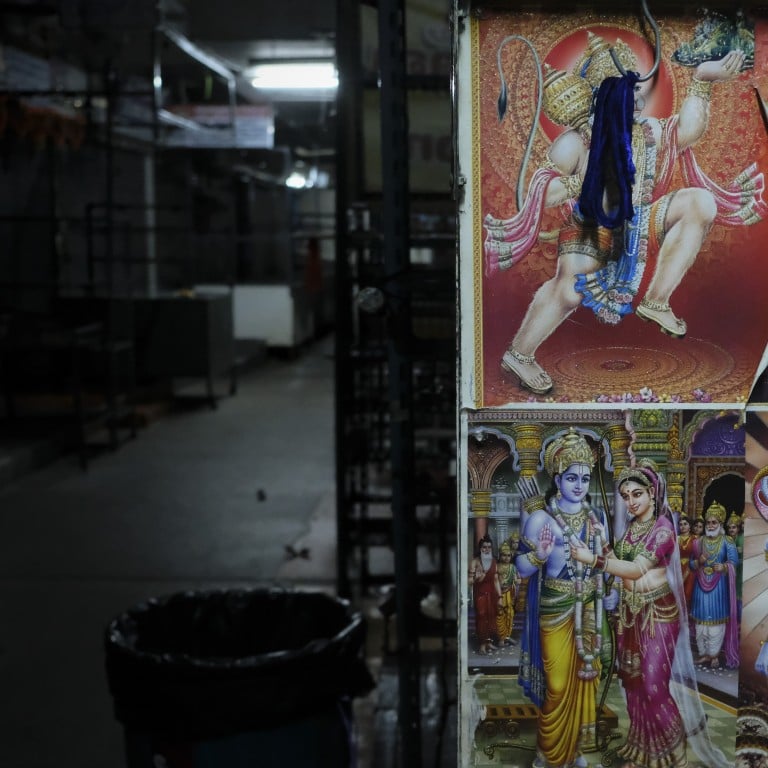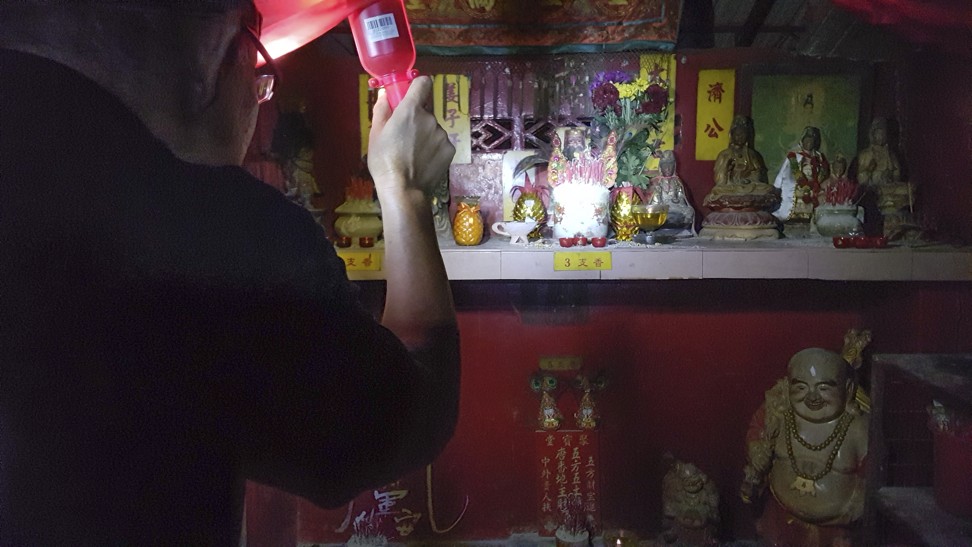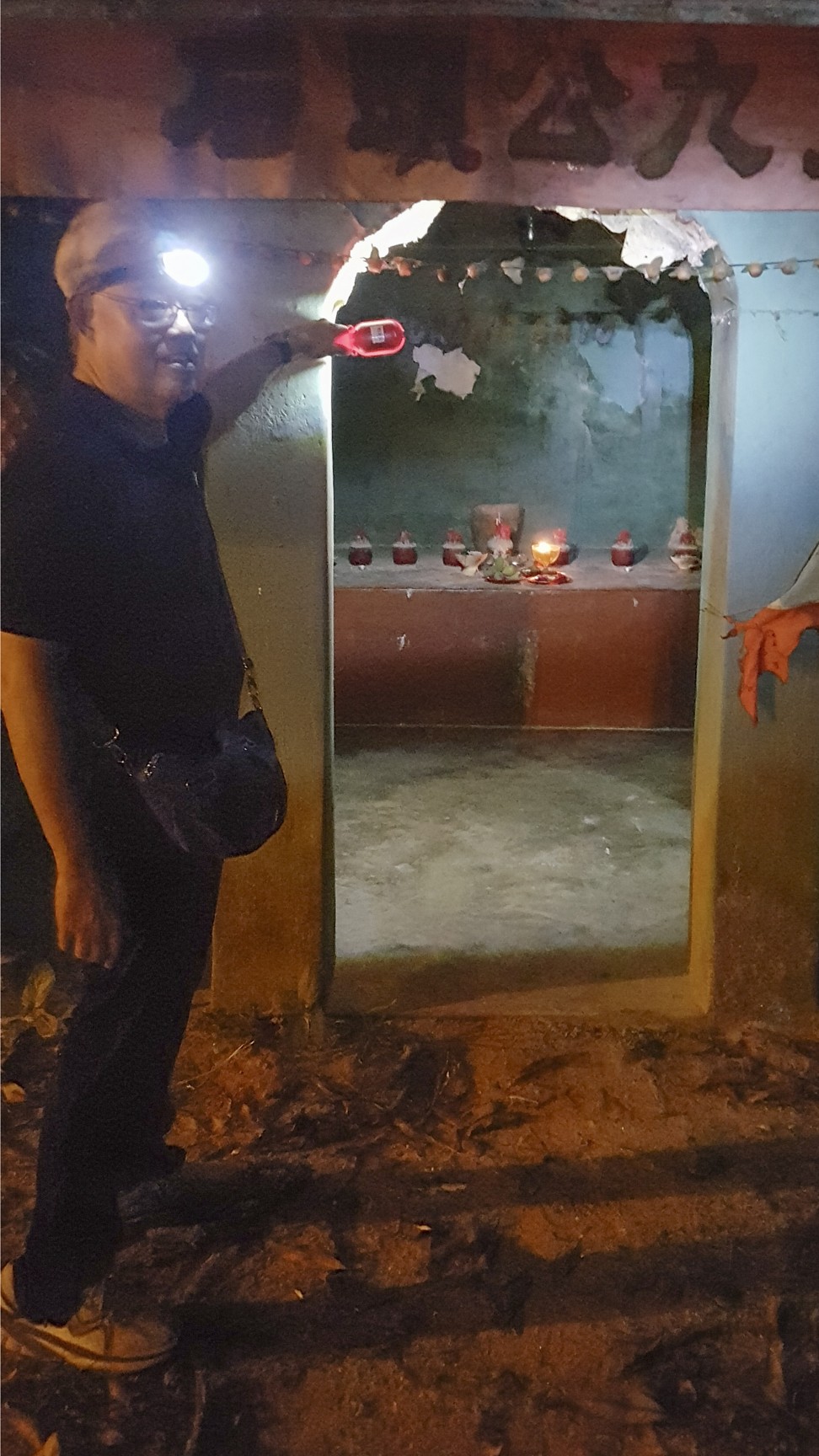
Dark tourism: three ghost tours in Southeast Asia where history, beliefs and horror combine to offer spine-tingling thrills
- Guardian spirits, severed torsos and spectres of protest in Bangkok; a Penang house of horrors; offspring of pregnant women who died haunting Singapore cemetery
- Tour guides take visitors to Thailand, Malaysia, and Singapore to macabre destinations well off the usual tourist trail
On the second floor of a deserted market in Bangkok’s Chinatown, the tour group stops beside a spirit house, which looks like a miniature Buddhist temple on a pedestal.
Festooned with garlands and blinking fairy-lights, these shrines, found all over Thailand, are put up to house a guardian spirit which can ward off misfortune and malicious ghosts.
The deities on the altar are Buddhist, Hindu and Chinese. Next to them stands an effigy of a little boy known as a kuman thong (golden child), a mischievous spirit appeased by offerings of red Fanta, which represents blood.
As we look around, many of the little businesses, hidden behind grey metal shutters, have protective talismans above their doors, some Taoist, others Buddhist. Beneath them is a creepy-looking mannequin dressed in traditional Thai clothes, illuminated by a tube of fluorescent light.



“Taxi drivers reported picking up two young sisters dressed in long black skirts and driving them to a railway crossing at night. Then the drivers saw their severed torsos crawling along the railway tracks, because the sisters had been in a motorcycle accident on the tracks and got cut in half by a train while on their way to their mother’s funeral,” he explains.
Days before the walking tours commence, the owner sends his guests photos and YouTube links for backstories.


Some of these protesters hid out in the Royal Hotel, where they set up a makeshift medical clinic. Violence followed when soldiers stormed the hotel. “Some guests at the hotel still see protesters crying out for help in the mirror, but when they look around nobody’s there,” says Dunne.
Call them “dark tourists” or “urban explorers”, but they are thrill-seekers too. “When I go into these places, I get a real charge out of the atmosphere, the history, the crimes and all the ghost stories,” says Dunne.

Singapore’s City of the Dead
The city state’s largest Chinese cemetery is a roost for birdwatchers, a nature retreat for hikers, and an alleged haunt of the pontianak. These female spectres, born to women who died while pregnant, have been immortalised in many a horror film.
Legend has it that the pontianak, often portrayed as having pallid skin, red eyes, black hair and a white dress smeared with blood, can change into a sexy siren to seduce unsuspecting men whose entrails she will tear out and devour.
Since 2012 we’ve guided 21,000 people through the cemetery and never seen any Caspers
Until the advent of modern medicine in the 20th century, many women in Southeast Asia died while pregnant or in childbirth. Both the Philippines and Thailand have legends of similar spectres. Opened in 1922 and closed to new burials since 1973, the Bukit Brown Cemetery is a city of the dead, containing around 100,000 graves.
To explore this 200-acre (80-hectare) site in the jungle, All Things Bukit Brown provides free guided tours on the theme “Heritage, Habitat and History” that provide insights into Chinese funerary customs and allow participants to pay their respects at some of the most famous tombs, such as the one belonging to Chew Keok Leong, a prominent doctor from Beijing whose large tomb is watched over by two Sikh guards holding rifles.
“When we started doing the tours we did hear some strange stories from the old tomb-keepers,” says All Things Bukit Brown’s co-founder and coordinator, Claire Leow, “like how Chinese Triads used the graveyard for bloody initiation rites in the 1970s, and people came to hold seances here, or sexual perverts performed rituals and the superstitious wanted to find winning lottery numbers.

“The caretakers were disgusted and played tricks on them. One of them discovered a couple fornicating by a grave. He put on a black rubbish bag as a costume and sneaked up on them, speaking in an old Hokkien accent, to scare them off.”
Leow is a sceptic, though. “Since 2012 we’ve guided 21,000 people through the cemetery and never seen any Caspers,” she says, laughing, referring to the friendly cartoon ghost.
That has not deterred paranormal investigators, such as the vlogger behind YouTube channel Amy’s Crypt, from descending on Bukit Brown.

During her nocturnal visit to make a video for the channel, the vlogger used Spirit Box, a free app for mobile phones, to detect ghostly presences.
Apart from a few crackling voices, which she admits could have been “radio interference”, the results are inconclusive.
In spite of this, few would dispute that the graveyard, hemmed in by jungle, alive with creepy-crawlies and open all night, plays on a person’s fear of the unknown and the mysteries of our mortality.

Penang’s Army of Phantoms
Wearing headlamps, we peer into the musty, cement-floored shrine, where locals have installed statues of powerful deities, such as the Tiger God, capable of warding off evil spirits.
Winston Lim, the operations manager and a guide for Penang Ghost Tours in Malaysia, explains the history of this foreboding, century-old mansion, built on land that locals claimed was cursed. The tycoon Chung Thye Phin paid no heed to these warnings.

No sooner had the house been built than misfortune came. The owner’s daughter and several servants perished. Then the owner died. When the Japanese invaded Penang during World War II, the mansion became a local command centre for the invaders and a bordello staffed by sex slaves. The soldiers executed many of the women there.
Passing through a hole in a chain-link fence, Winston leads us through the bare bones of the building’s exoskeleton as the light from our headlamps bobs up and down. The ceilings are gone, but the stone walls etched with graffiti are still standing. Something whips past my head. I hope it’s a bat.
Indonesia’s extramarital sex ban could be disastrous for country’s tourism industry
Lim shines his flashlight into the empty swimming pool, fissured by cracks sprouting weeds. “This is where the owner’s daughter drowned herself after she was forbidden to marry the man she loved. Sometimes people hear gurgling noises coming from the pool at night,” he says.
But the only things I can hear are frogs ratcheting and the distant murmurs of the nearby river.
Behind many of the fantastical ghost stories tour guides in all three places lie real tragedies – mothers dying in childbirth, military atrocities, railway accidents, inhuman acts perpetrated on women and doomed lovers, separated in life but reunited in the great beyond – that are just too haunting to be forgotten.
At the end of the night, all the tours map out the darker histories of these three different countries, because some loves, deaths and injustices are just too haunting to ever forget.
Jim Algie has written about the Thai supernatural in his nonfiction book, “Bizarre Thailand: Tales of Crime, Sex and Black Magic” (Marshall Cavendish, 2010).
